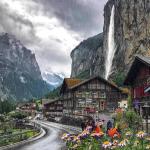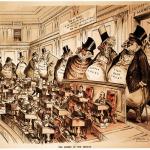
(Wikimedia Commons public domain image)
I was surprisingly sad to leave Switzerland this time. As we were packing up to leave the house in which we’d been staying, the couple that takes care of the place arrived to tidy up after us for the absentee landlord, who is a lifelong friend of theirs (but who now resides in the United States and is currently serving a mission with his wife in England). We ended up talking for quite a while. They’re long-time temple workers in Zollikofen now, but he, at least, had grown up right there in Matten b. Interlaken and he knew all of the old members that I had known (e.g., the impressive Interlaken branch president, Walter Ruf, who [in my opinion] might have been the first Swiss General Authority had he been a generation or two younger; the, umm, challenging Sister Mauderli, with her architect son in Burgdorf, whom I also knew; the Stalder family, with its three beautiful daughters [legendary among the Swiss missionary elders]). They remembered the brilliant and somewhat intimidating temple president, Immo Luschin von Ebengreuth. They remembered my mission president, Edwin Q. Cannon, and his wife, Janath Russell Cannon.
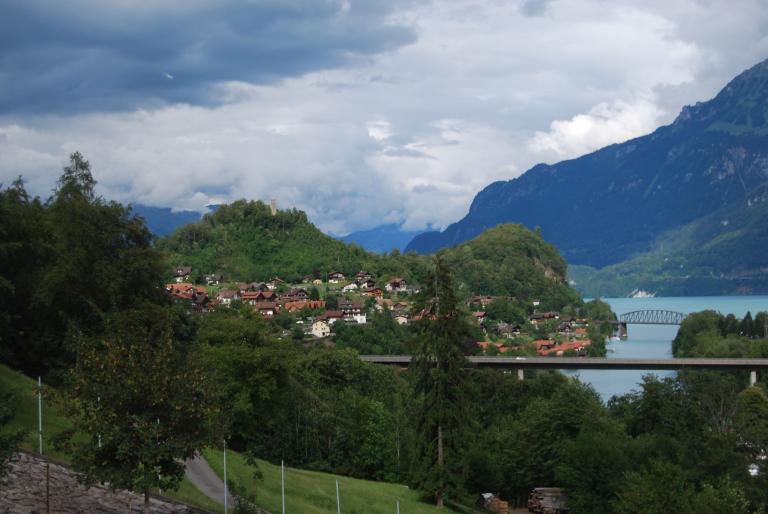
As we’ve done several times before, my wife and I drove by the home where my two Interlaken missionary companions and I lived, at Kanalpromenade 46. I didn’t get to know Herr Zbären very well; he was a chef at a very posh restaurant in St. Moritz, and he was seldom home. (And, by the way, when he was home he did no cooking.) But Frau Zbären, our landlady, was a sweetheart, very kind. When my wife and I were en route to Egypt not long after our wedding, we spent some time in Switzerland. We paid a visit to Frau Zbären and she invited us back for dinner that evening. I’m glad that my wife had the opportunity to meet her, Both of the Zbärens are long gone now; he went first and, a few years later, I ran into the then-resident of the house and he told us that she had gone into a senior citizens home where she had passed away.
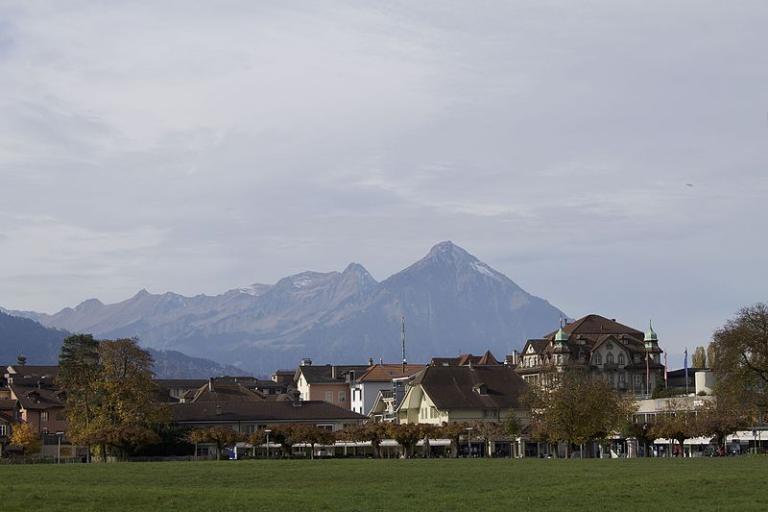
I expect that Pfarrer Theo Bürk, the admirable Protestant pastor of Ringgenberg, must have long since passed on. A few stays in Switzerland ago, with my wife, I visited his striking old church and the parish community center associated with it. I wanted, if possible, to find out where Rev. Bürk was and what might have become of him. There were, though, only a few people there on that weekday, and they could tell me nothing. It has, after all, been decades.
Anyway, such reminiscences only served to heighten my nostalgia and to put me in an even more sentimental mood. Among the many reasons for my affection for Switzerland is the fact that so many of my formative memories and so many good people are associated with it. How could I not love such a place?
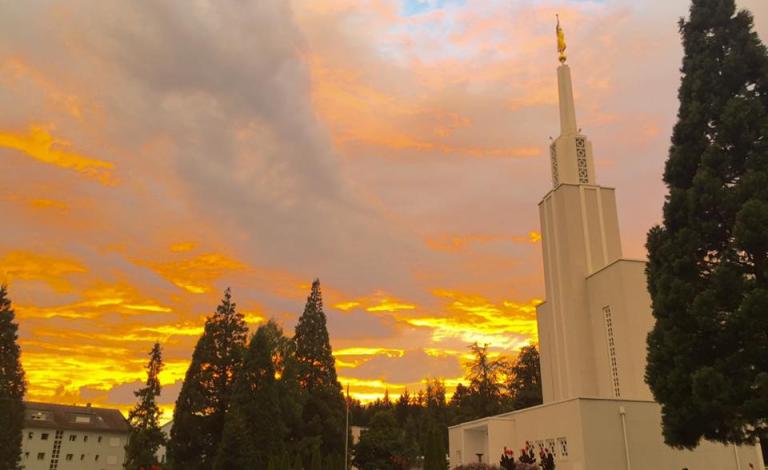
It’s a place that I’ve loved since I served my mission in Switzerland.
Oddly, the website of the Interpreter Foundation continues to produce. Here are three recent items that I hope you’ll enjoy:
““This Stone Shall Become the Great, and the Last, and the Only Sure Foundation”: A Nephite Poetics of Dramatic Fusion and Transfer in Jacob 5,” written by Matthew Scott Stenson
Abstract: In this study, three intersecting images are traced through the small plates until Jacob 5, where they directly (or by implication) culminate in the final section of Zenos’s allegory. The three images appear fused together in Nephi’s and Jacob’s writings. Specifically, this literary study tracks the images of the olive vineyard, the sheepfold and pasture, and the cornerstone or rock foundation. These oddly fused (or adjacent) images, though complexly employed, can be understood best as representing not only Christ but a gospel-centered record to be revealed by him. Fundamental to this reading is the idea that the Good Shepherd gathers his sheep by means of a stone or rock comparable to the gospel of Christ. In making this case, it is helpful to compare related texts such as 2 Nephi 25 and 3 Nephi 27. The value of this analysis is to demonstrate a unity amidst complexity in the aesthetic of the Book of Mormon and to offer alternative readings of certain scriptures, especially Jacob 5. Zenos’s allegory is read here as tragicomedy and as one locus for the aforementioned images.
“Interpreting Interpreter: A Stone—Great, Last and Sure,” written by Kyler Rasmussen
This post is a summary of the article ““This Stone Shall Become the Great, and the Last, and the Only Sure Foundation”: A Nephite Poetics of Dramatic Fusion and Transfer in Jacob 5” by Matthew Scott Stenson in Volume 61 of Interpreter: A Journal of Latter-day Saint Faith and Scholarship. All of the Interpreting Interpreter articles may be seen at https://interpreterfoundation.org/category/summaries/. An introduction to the Interpreting Interpreter series is available at https://interpreterfoundation.org/interpreting-interpreter-on-abstracting-thought/.
The Takeaway: Stenson identifies three images—the olive vineyard, the sheepfold and pasture, and the cornerstone—that appear to be fused in the writings of Nephi and Jacob, arguing that they represent not only Christ in his role as a Good Shepherd, but also the sacred record by which he gathers his sheep and which they can use as a sure foundation. For Stenson, this process represents a literary tragicomedy, with the tragedy of Israel’s downfall being countered by the comedy of its unification in Christ.
Hugh Nibley Observed: “Matthew Black and Mircea Eliade Meet Hugh Nibley,” written and presented by Gordon C. Thomasson
“I left BYU in 1968 after suffering, as a passenger, in six months’ time what normally would have been two fatal automobile accidents. Already having been admitted to University of California, Santa Barbara, Professor Nibley told me that if I came back to complete advanced degrees in religion at BYU he would never speak to me again, because I “would have nothing to say” (Hugh then made an explicitly pointed critique of academic inbreeding in BYU religion at the time). During the rest of my graduate studies elsewhere, I stayed in contact with him through various means, primarily because I still sporadically worked on Brigham Young materials we had researched together. My other responsibilities to him at BYU had included my subsequently continuing study and critiques of both Latter-day Saint apologetics for the Book of Mormon (a never-completed thesis) and of temple-related ritual texts across cultures and through world history. I also continued to follow his other research.”
Part of our book chapter reprint series, this article originally appeared in Hugh Nibley Observed, edited by Jeffrey M. Bradshaw, Shirley S. Ricks, and Stephen T. Whitlock. For more information, go to https://interpreterfoundation.org/books/hugh-nibley-observed/.


